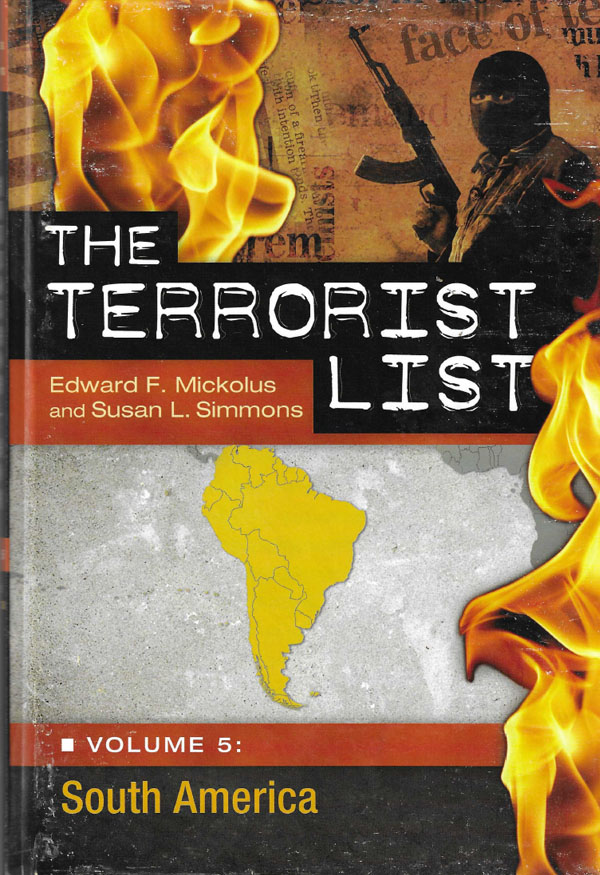- Title : The Terrorist List -South America
- Authors : Edward Mickolus, Susan Simmons
- Publisher : Praeger Security International
- Publication Date :
- Language : English
- Hardcover : ___ pages
- ISBN-10 :
- ISBN-13 :
- Item Weight : pounds
- Dimensions : 7 x 2.25 x 10.25 inches

Introduction
The following list includes the names of individuals who have appeared in my previous chronologies of international terrorism, and includes individuals who have been named in open sources as somehow involved in terrorist attacks or organizations. Aliases, when known, are included. Listing does not mean that the individual is a terrorist. Many of the individuals listed were later determined by a court to be innocent of any involvement in incidents, or that there was not sufficient evidence to proceed to trial. Others were named as prisoners whose release was demanded in hostage negotiations. I have attempted to include major cases of domestic terrorism or cases that have been tried under national antiterrorism statutes. This should not be interpreted as indicating that I deem the individuals to be terrorists, nor does it indicate any position on the underlying motivations of the individuals named. In some cases, individuals so accused have gone on to become governmental leaders. This list does not purport to be globally comprehensive—it is limited solely to international incidents or other incidents of sufficient import to be included in previous chronologies.
The listing uses the same definitions as my earlier books. International terrorism is the use, or threat of use, of anxiety-inducing extranormal violence for political purposes by any individual or group, whether acting for or in opposition to established governmental authority, when such action is intended to influence the attitudes and behavior of a target group wider than the immediate victims and when, through the nationality or foreign ties of its perpetrators, its location, the nature of its institutional or human victims, or the mechanics of its resolution, its ramifications transcend national boundaries. I have also included incidents that were initially treated by security authorities are terrorist or quasi-terrorist, such as hijackings that were later determined to be the work of mentally unstable individuals, or individuals seeking nontraditional modes of transportation but who did not have terrorist motives.
Due to the criminal nature of terrorism, its perpetrators often use aliases and “also known as” names, both to mask their identities and to increase the propaganda value of their actions. I have attempted to include these names when known, linking these aliases to an entry that includes a description of the perpetrators’ activities, keyed to the individual’s principal name.
There are several transliteration systems in use regarding Arabic names. In each instance, I have attempted to include the major variants, again keyed to the most frequently used principal name. Arabic names are alphabetized without regard to name fragments such as al-, bin and Abd-al. The last main element is used for alphabetization. For further thoughts on problems in establishing consistency in transliterations, see my “Sidesteps Towards an Error-Compensated Method of Computing the Probability of Accuracy in Orthographic Biography” 29, 2 Journal of Irreproducible Results (1984), p. 29.
Names are listed alphabetically by surname, but listed as first name first to prevent confusion in reading Arabic names. Hispanic names are alphabetized according to the individual’s patronymic.
DPOB refers to Date and Place of Birth, when reported. They have not been included for nonpolitical, nonterrorist hijackers. Such information is often available in the terrorism chronology books listed on this website.







